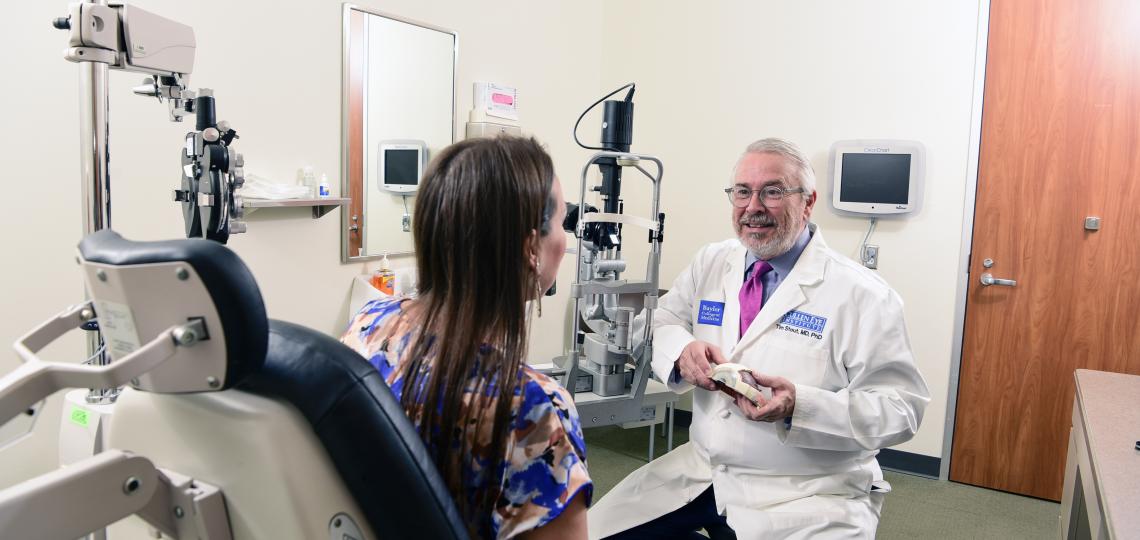Andalusia Pediatrics: Compassionate Look After Your Children
Andalusia Pediatrics: Compassionate Look After Your Children
Blog Article
The Pros and Disadvantages of Different Refractive Surgical Procedures for Improved Eyecare

LASIK Surgical Procedure
LASIK surgical treatment is a commonly carried out refractive procedure that intends to deal with vision concerns such as astigmatism, farsightedness, and nearsightedness. During the treatment, a slim flap is produced on the cornea, and a laser is utilized to reshape the underlying cells, fixing the refractive error.
One of the primary benefits of LASIK surgical treatment is the quick renovation in vision experienced by numerous patients. It is important for people thinking about LASIK surgery to go through an extensive examination by an eye treatment professional to determine if they are ideal prospects for the treatment.
PRK Procedure
The PRK procedure, likewise understood as Photorefractive Keratectomy, is a type of refractive surgical treatment that aims to fix vision issues comparable to LASIK surgical treatment. Unlike LASIK, which involves creating a flap in the cornea, PRK works on the surface area layer of the cornea.
Among the benefits of PRK over LASIK is that it gets rid of the threat of flap-related difficulties considering that no flap is developed throughout the surgery. This can be useful for individuals with thin corneas or those involved in get in touch with sports where eye trauma is a possibility. The recovery time for PRK is typically much longer compared to LASIK, as the external layer of the cornea needs time to regenerate after the procedure. Despite the longer recuperation duration, PRK can be a suitable alternative for individuals seeking vision improvement surgical procedure.
SMILE Surgical Treatment
An innovative refractive surgical procedure method getting appeal in the area of ophthalmology is SMILE Surgery. Tiny Laceration Lenticule Removal (SMILE) is a minimally invasive treatment that deals with vision by reshaping the cornea using a femtosecond laser. Unlike traditional LASIK surgical procedure, SMILE Surgery involves producing a tiny incision in the cornea to remove a lenticule, which causes much less interruption to the corneal framework and potentially faster recuperation times.
One of the primary benefits of SMILE Surgery is its capability to deal with nearsightedness (nearsightedness) and astigmatism with high accuracy, resulting in exceptional aesthetic end results for patients. The minimally invasive nature of the treatment also decreases the danger of complications such as dry eye syndrome, making it a desirable choice for people seeking refractive surgical treatment.

LASEK Technique
Having explored the advantages and factors to consider of SMILE Surgical treatment, one more notable refractive surgery technique worth examining is the LASEK Method. LASEK, which means Laser-Assisted Subepithelial Keratectomy, is a type of laser eye surgical procedure that aims to fix refractive errors such as nearsightedness (nearsightedness), hyperopia (farsightedness), and astigmatism.
Unlike LASIK, LASEK does not involve creating a corneal flap. Instead, during a LASEK procedure, the specialist uses a watered down alcohol service to loosen up the thin external layer of the cornea, referred to as the epithelium. This layer is after that delicately relocated apart to enable the laser to improve the underlying corneal tissue. When the cornea has actually been improved to the wanted level, the epithelial layer is repositioned.
One of the primary benefits of LASEK is that it can be suitable for people with thin corneas who might not be excellent prospects for LASIK. In addition, LASEK normally leads to very little post-operative discomfort and a quicker recovery time compared to PRK. The aesthetic healing procedure with LASEK may be slightly longer than with LASIK.
Implantable Call Lenses
Implantable Call Lenses provide a long-lasting vision correction remedy for individuals seeking an option to typical contact lenses or glasses. These lenses, likewise known as phakic intraocular lenses, are operatively placed into the eye to deal with refractive errors such as myopia (nearsightedness), hyperopia (farsightedness), and astigmatism. cardiologist andalusia. Unlike traditional contact lenses that remain on the surface area of the eye, implantable contact lenses function within the eye itself, giving clear vision without the requirement for daily upkeep or removal
Among the key benefits of implantable contact lenses is their durability. As soon as placed, they can remain in the eye forever, supplying consistent and secure vision adjustment. In addition, these lenses can be additional info an outstanding alternative for individuals who are not great prospects for laser eye surgery or that choose a relatively easy to fix vision correction treatment.
However, implantable get in touch with lenses do lug some risks, consisting of the possibility for cataracts or increased eye stress. It is crucial for individuals considering this alternative to talk to an eye care expert to establish if implantable contact lenses are the ideal selection for their specific requirements and eye wellness.
Verdict
In verdict, each kind of refractive surgical procedure has its very own benefits and downsides. LASIK surgical treatment is prominent for its quick recovery time, while PRK procedure might be ideal for individuals with thin corneas.

Generally, SMILE Surgical treatment provides an appealing choice for individuals looking to improve their vision with refractive surgical procedure.
Report this page